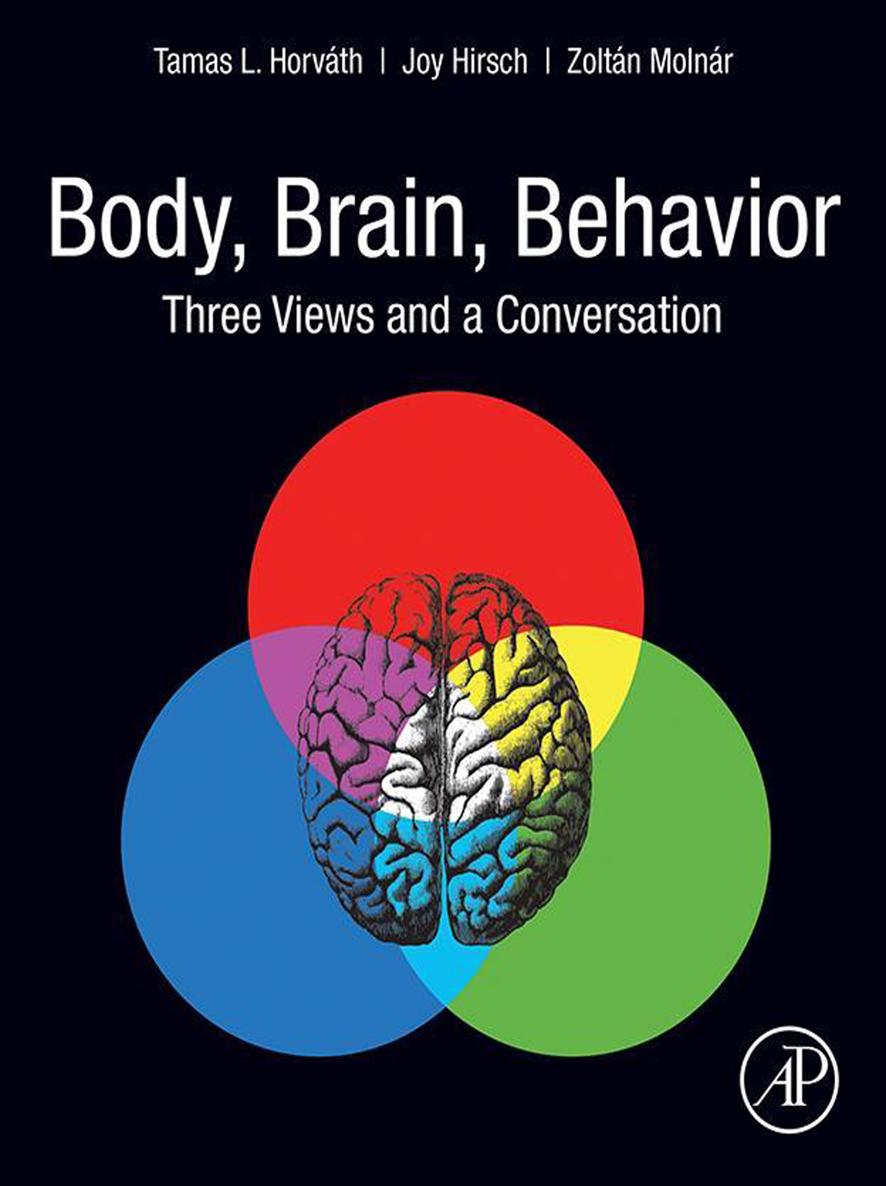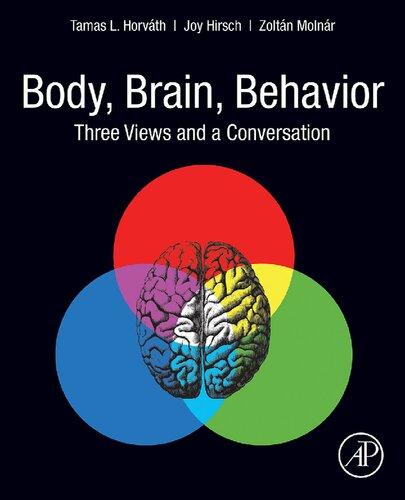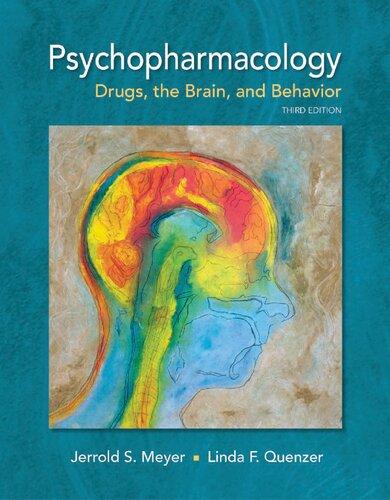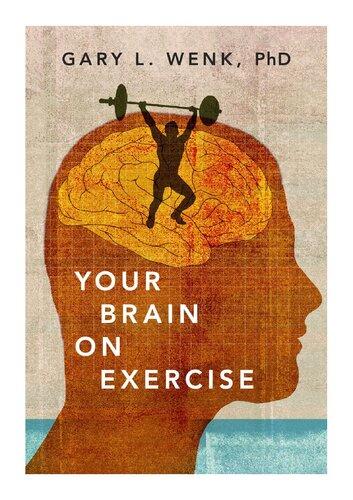Current scientific focus
Chapter 1. Zoltán
Abstract
Molnár:
the developing brain
1.1 The Blind Men and the Elephant
1.2 Building the brain is like a house of cards
1.3 Your brain is comprised of different cells with various birthdates, but most of your neurons are as old as you are
1.4 Importance of connectivity in brain function
1.5 Generation of neuronal diversity
1.6 Migration is key to newly born neurons to reach to the proper destination
1.7 Brain evolution is the evolution of brain development
1 8 Nothing in biology makes sense except in the light of development
1.9 Origins of the mammalian cerebral cortex
1.10 Conservation and divergence during development and evolution
1.11 Evolution of neuronal types
1.12 The brain is a computer that is switched on while it is constructed
1.13 How to link cognitive conditions to their developmental origins?
1.14 Mother and baby form a unit during and after pregnancy
1.15 Influence of maternal environment on the baby’s prenatal development
1 16 Functional localization in the brain
1.17 Remnants of the developmental scaffold have an important role in the adult, linking brain, body, and behavior
1.18 Summary
References
Chapter 2. Tamas Horvath: The hunger view on body, brain and behavior
Abstract
2.1 What is the brain?
2.2 Conceptual framework
2.3 Eating: linking the environment to the body and brain
2.4 Plasticity beyond the arcuate nucleus and the hypothalamus triggered by metabolic changes
2.5 Cellular metabolic principles of neuronal responses to the changing metabolic environment
2.6 The conundrum of interventions based on metabolic principles to fight obesity and aging at the population level
2.7 Hunger promoting NPY/AgRP neurons affect higher brain functions and brain disorders
2.8 The metabolic concept of higher brain functions
2.9 Summary
References
Further reading
Chapter 3. Joy Hirsch: Brain-to-Brain
Abstract
3.1 Full circle
3.2 The transparent black box reveals the single brain
3.3 Dyads in agreement and disagreement
3.4 Two brains from different social worlds: high and low disparity dyads
References
Discussion 1 20th November 2020
1 How to transcribe the Zoom discussions?
2 The brain as a “black box”
3 Buildings to bricks as brains to ion channels: what does the ion channel tell us about the brain?
4 Eye-to-eye contact and social consequences
5 Eye-to-eye contact, blindness, and other deficits
6 Brain development and adaptations to sensory deficits
7 Atypical development and brain
Discussion 2 27th November, 2020
1 Many points of view: the “elephant” and what is a brain?
2 The whole body is part of the brain
3 How was the brain put together?
4 The brain needs a body
5 One brain–two bodies versus two brains–one body
6 Lot of ways to make a brain
7 Cortex may be overrated
8 Cortex gathers information from outside
9 Cortex organization remains flexible across the life span
10 Cortical cells are relatively slow to turn over
11 Cell replacement in other body parts
12 Two systems of replacement and regeneration
13 C14 and evolution
14 Neurogenesis and injury
15 Fine-tuning the “black-box”
16 Humans have a very long period of postnatal development
17 Humans versus crows
18 Alternative brains
19 Function versus structure and form
20 The big question for evolutionary neurobiology
21 Principles of connectivity
22 Abnormal brain development: consequences
23 Fetal alcohol syndrome
24 Induced changes to brain development during pregnancy
25 Potential effects of early interventions during periods of plasticity
26 Social interventions to achieve social adaptations
Discussion 3 22nd January, 2021
1 A silver lining from hardship to wisdom
2 What is wrong with the typical human brain?
3 Coincidence detection and the developing brain
4 Single-event food aversions
5 Cerebellum and single-event learning
6 The vestibular system and single-trial motor learning
7 Languages and the roles of supplementary hand gestures
8 The brain and acquired versus native languages
9 Different languages/different brains?
10 Does dancing protect against Alzheimer’s disease?
11 The food axis connects brain to body to mind
12 What is this book about?
13 Synergy to creativity
Discussion 4 10th February 2021
1 Individual variations in tolerance of food shortages
2 Puberty and energy metabolism
3 Genes for anorexia
4 Metabolism and the migration out of Africa
5 Metabolism for long distance running
6 Oxygen and metabolism
7 Why are there 6 layers of cells in the cortex?
8 Neural rehabilitation
9 A role for neuroplasticity
10 Longevity and neuroplasticity
11 Human humor
12 Effects of social reciprocity
Discussion 5—17th February 2021
1 “Gut” and brain interface
2 Ascending signals of the autonomic nervous system and brain functions
3 “Gut” control of eating behavior: a paradigm shift
4 Where are the models to connect brain function and body signals?
5 Developing models and findings to connect brain function (learning) with real faces
6 Is learning better when hungry?
7 Beyond the hypothalamus and receptors for orexin
8 Bottom-up influences on top-down processes
9 Attention and arousal
10 Linking hypotheses between brain function and behavior
11 The role peripheral tissues (such as liver), arousal, and high level perception
12 Variations of social behaviors based on arousal and context
13 Beyond hypothalamus to cortex or is it the other way around?
14 Many working parts become one brain
15 Hypothalamus as a radio station
Discussion 6 22nd February 2021
1 Reviewing grant applications based on a holistic view
2 Fast and slow decision-making
3 Personality and spending decisions
4 Soap and far-away hotels
5 Multi-generational effects of food shortages
6 Effects of pandemic isolation in science
7 Our brains during agreement and disagreement
8 Disagreement versus social harmony
9 “On-line” versus face-to-face disagreements
10 Social “change blindness” and iPhones
11 Social cues for rituals compared to novel situations
12 Writing is creative
13 Plagiarism or not?
Discussion 7 3rd March 2021
1 Core temperature and longevity
2 Bio-markers for major depression
3 How do we measure the success of neuroscience?
4 The big problem of understanding long-term cause and effects
5 Conventional wisdom versus energetic naiveté
Discussion 8 10th March, 2021
1 Input to the brain is gaited and selected
2 Thalamus “listens” to the brain and not very much to the outside world
3 The whole brain is somatosensory cortex?
4 Functional specificity versus distributed processes
5 Functions assigned to brain areas?
6 Does the inner life of the brain need a body?
7 Brain to brain, body to body: how separable?
8 The adaptable brain
9 The “black box” and the interaction between brains
10 Three views of the brains and conversations to bring it together
Discussion 9 17th March, 2021
1 Pandemic effects: is communication altered by online (Zoom) compared to face-to-face communication?
2 Student admissions procedures during the pandemic
3 How do we evaluate our institutions?
Discussion 10 7th April, 2021
1 A book review
2 The neuroscience of yesterday versus the neuroscience of tomorrow
3 Laboratory architecture and creativity
4 Creative synergy versus isolated intelligence
5 The fundamental social unit and the collective behavior of ants
6 Collective intelligence of multiple brains
7 Collective intelligence without any brain
8 The “data-dump” and micro-views
9 What is your 5-year plan?
10 To plan or not to plan
11 Function or structure?
12 What is “normal”?
13 How do we teach creativity?
14 The academic ladder and war
Discussion 11 14th April, 2021
1 The Eureka moment
2 How do we structure education for science?
3 Objective measurements and facts versus objective measures and promise
4 The “bridge” between data, findings, and interpretation
5 From data to interpretation: a slippery slope
6 The power of a personal connection
7 How do we measure the ability for interpersonal interactions?
8 The development of the ability for interpersonal interactions
9 How are dyadic interactions affected by physiological variables?
10 The fear of public speaking and physiological variables
11 How are dyadic interactions developed?
12 Distractions and competing forms of input information
13 Variations in dyadic connections
14 The effects of the absence of live interactions
15 Pandemic-related changes in how we connect
Discussion 12 28th April, 2021
1 The making of brains
2 Nature, compensation, and nurture: separate or a mix?
3 Many competing points of views about brain and behavior
4 Predictions for criminality and a mechanism for fetal alcohol syndrome
5 Placental effects on development
6 The placenta to brain connection
7 Social interactions begin in utero
8 Sleep, brain, and lots of other
9 Sleep and longevity
Discussion 13 10th May 2021
1 Bad things matter in our lives
2 A well-hidden dark side: is it predictable?
3 Memory enhancement during traumatic events
4 Trauma in medical school and in academics
5 Pros and cons of peer review
6 Imagine if editors competed for papers to publish
7 Peer review: pros/cons and practice
8 A paper review: the most popular brain areas
9 Dejavu all over again
10 Isolated parts versus the integrated whole
11 The symphony analogy
12 We are sculpters of our own brains
13 Asperger’s and brain plasticity
14 High versus low pathways leading to social malfunctions
15 Empathy: an exaggerated social function
17 Narcisism
18 Anatomical substrates of psychiatric conditions
19 Is the isolated brain conscious?
20 The neuroscience department of the future
21 What about this emerging book?
22 The parabol of many blind people and the elephant
23 The person in the science
Discussion 14—Monday, 17th May, 2021
1 On talking about interdisciplinary departments
2 Two brains and one dyad
3 Leader and follower brains
4 Interpersonal interactions and the autonomic nervous system
5 Our background statements: Zoltán started as a neurosurgeon in Hungary
6 Neurons aren’t even the major part of the brain
7 Friends and science
8 When friendship fails
9 Cross-disciplinary collaborations: strengths and weaknesses
10 How do we know what is an important question?
11 The compass going forward: uncharted territory
12 Most important papers and the life span of a scientist
13 Scientists and transitions
14 Vitamin C, the Nobel Prize, and the Hungarian crown (you can’t make this up!)
15 Books not brains are repositories of information
16 Evolutionary influences on the human brain
17 The “zero” cranial nerve
Discussion 15 20th May 2021
1 Various roads to becoming a neuroscientist
2 Introduction to the hypothalamus
3 Cellular physiology of sleep
4 Ablation of layer 5
5 Layer 6b neurons
6 Inhibitory signals
7 What does the cortex do?
8 Physiological homeostasis
9 Global versus local effects
10 Resting state signals and their interpretation
11 The value of understanding single cell types
12 The development of inhibitory neurons
13 The impact of “data dump” papers
14 Can perceptions be read from the brain?
16 Classification of cells in the mouse brain
Discussion 16—3rd June 2021
1 Does “normal” mean the absence of antisocial behavior? How do we separate unusual behaviors into normal or mental illness categories?
2 What role does genetics and development play in health and disease?
3 Is mental illness a common mental state? Where is the threshold between “normal” and “not-normal”?
4 How valid is our current information about the effects of diet on development and mental illness?
5 Human development is so complicated, how does it ever turn out right?
6 The concept of a spectrum for behaviors is useful in describing clusters of social qualities such as is autism spectrum disorder
7 Antisocial behaviors can be self-promoting and reinforcing for some people
8 How much of our behavior is modulated by our genes? It is an enigma that our genes are so similar and our behaviors are so diverse. Can genes give us information about susceptibilities to conditions, such as alcoholism, heart disease, and dementia?
9 The problem of sharing medical information and records
10 Prediction of risk factors from SNIPS can be dangerous and contribute to unnecessary concerns or worries because the probabilities are not well-applied to individuals
11 Normative versus idiopathic information
12 Information gathered from vaccinated people would have been very informative. Should we vaccinate children?
13 How do we understand cognitive side effects following COVID vaccination and consequences for development?
14 When we consider the possible physiological substrates that underlie behavior, health, and disease, we have to consider nonneural mechanisms including the microglia
15 The brain is like a garden and there are many reasons why the flowers do and do not grow
16 Where do all the strains of mice and other animals come from? Why are there so many?
Discussion 17 17th June 2021
1 Individual differences: savants and the biology of special talents
Discussion 18 17th June 2021
1 Study section blues
2 What is a brain?
3 Diversity of the microbiome
4 Diet, behavior, energetics, and microbiota
5 Neurons in the stomach: are they part of the brain?
6 Enterotypes and behavior
7 What does the intestinal autonomic system have to do with the substantia nigra?
8 Where does the gut bacteria come from?
9 Dementia, chronic inflammation, and the mouth
10 A science hero: Katalin Kariko
11 To be a scientist …
Discussion 19 24th June 2021
1 What is dance?
2 Why do we dance?
3 Can we study the dancing brain?
4 The magic of music
5 Social partnership and couples dancing
6 Everybody can dance: a Nobel dance story
7 Learning to dance
8 Possible opinions about our book
9 Core problems in neuroscience
10 Science is what we measure
11 Fitting the pieces together
12 The “right” of being wrong
13 The “wrong” of being right
Epilogue—Zoltám Molnár
1 What did you lean and how did you change your views after the discussions?
Epilogue—Tamas L. Horvath
Epilogue Joy Hirsch
1 Conversation bootcamp
2 What is a brain?
3 What is the value of conversation?
4 What have I learned?
Index
Copyright
Academic Press is an imprint of Elsevier
125 London Wall, London EC2Y 5AS, United Kingdom
525 B Street, Suite 1650, San Diego, CA 92101, United States
50 Hampshire Street, 5th Floor, Cambridge, MA 02139, United States
The Boulevard, Langford Lane, Kidlington, Oxford OX5 1GB, United Kingdom
Copyright © 2022 Elsevier Inc. All rights reserved.
No part of this publication may be reproduced or transmi�ed in any form or by any means, electronic or mechanical, including photocopying, recording, or any information storage and retrieval system, without permission in writing from the publisher. Details on how to seek permission, further information about the Publisher’s permissions policies and our arrangements with organizations such as the Copyright Clearance Center and the Copyright Licensing Agency, can be found at our website: www.elsevier.com/permissions.
This book and the individual contributions contained in it are protected under copyright by the Publisher (other than as may be noted herein).
Notices
Knowledge and best practice in this field are constantly changing. As new research and experience broaden our understanding, changes in research methods, professional practices, or medical treatment may become necessary.
Practitioners and researchers must always rely on their own experience and knowledge in evaluating and using any information, methods, compounds, or experiments described herein. In using such information or methods they should be mindful of their own safety and the safety of others, including parties for whom they have a professional responsibility.
To the fullest extent of the law, neither the Publisher nor the authors, contributors, or editors, assume any liability for any injury and/or damage to persons or property as a ma�er of products liability, negligence or otherwise, or from any use or operation of any methods, products, instructions, or ideas contained in the material herein.
British Library Cataloguing-in-Publication Data
A catalogue record for this book is available from the British Library
Library of Congress Cataloging-in-Publication Data
A catalog record for this book is available from the Library of Congress
ISBN: 978-0-12-818093-8
For Information on all Academic Press publications visit our website at h�ps://www.elsevier.com/books-and-journals
Publisher: Nikki P. Levy
Acquisitions Editor: Natalie Farra
Editorial Project Manager: Sara Pianavilla
Production Project Manager: Kiruthika Govindaraju
Cover Designer: Miles Hitchen
Typeset by MPS Limited, Chennai, India
Preface
The idea of this book was sparked during a conversation between Natalie Farra from Elsevier and Tamas L. Horvath from Yale at the meeting of the International Society for Neurochemistry and the European Society for Neurochemistry in August of 2017, in Paris. Natalie pitched the idea whether to edit or write a book about the communication between peripheral tissues and the brain which has been the main research interest of Horvath over the last 30 years. Based on his experience of editing or providing chapters to previous books, Horvath thought that writing rather than editing a book on the topic will give more freedom to express provocative and timely ideas. However, rather than just concentrating on body brain interactions in the adult, extending the topic to developmental stages and to brain–brain interactions presented an even greater challenge. It was immediately obvious that an approach that involves multiple authors with nonoverlapping expertise would be the most effective way to formulate and discuss these complex issues. The three of us have three different, seemingly nonoverlapping interests and related expertise. It would be very unusual that we a�end the same sessions in scientific meetings, yet the answers for the complex issues lie in the interphase of our areas. In the book we provide these different takes on brain research in three “classical” parts. In the first part, the development and the evolution of the brain is discussed by Zoltán Molnár. In the second part, the relationship between the brain and the rest of the body is approached from the perspective of metabolism by Tamas L. Horvath. Finally, in the third”classical” part of the book, the interaction between brains is put in the focus by Joy Hirsch. However, the fundamental goal of our collaboration is to















